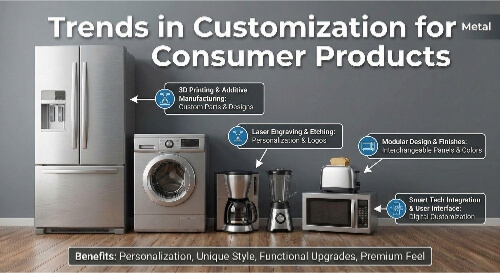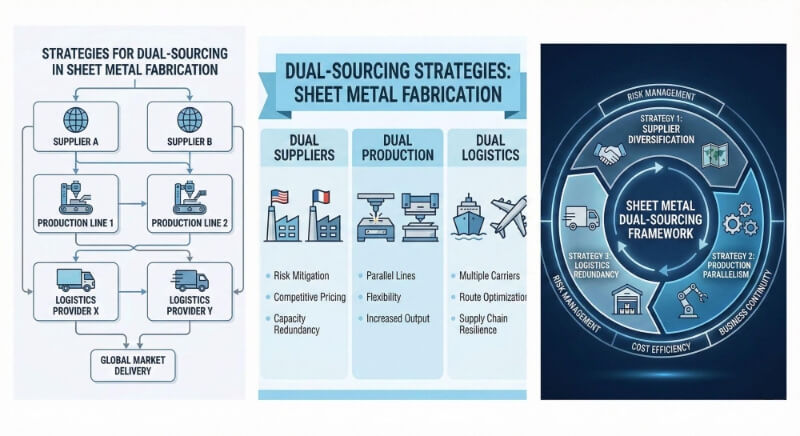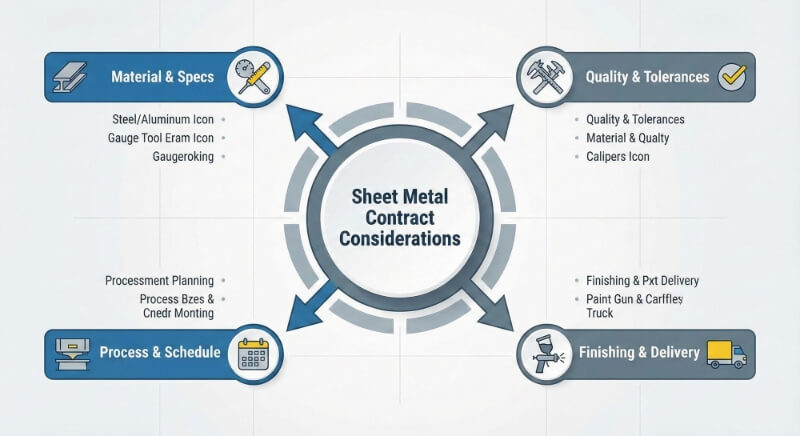Steel is a versatile material, but it’s vulnerable to corrosion. This can lead to costly repairs and replacements. Anodized steel offers a solution, enhancing durability and resistance to wear. It’s a game-changer for industries relying on robust metal components.
Let’s explore the fascinating world of anodized steel. We’ll uncover its benefits, applications, and the science behind this innovative metal treatment process.
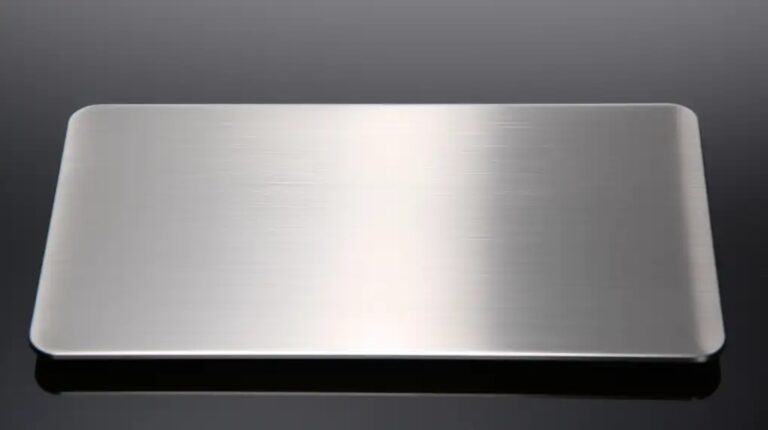
What is Anodized Steel?
Definition and Explanation
Anodized steel is a form of steel that has undergone an electrochemical process. This treatment creates a protective oxide layer on the surface. The result is a more complex, durable material with enhanced corrosion resistance.
Comparison with Anodized Aluminum
While aluminum anodization is more common, steel anodization follows similar principles. The main difference lies in the oxide layer formed. Aluminum forms a porous oxide, while steel creates a denser, less porous layer.
The Science Behind Anodization
Anodization involves an electrochemical process. The steel becomes the anode in an electrolytic bath. When current passes through, oxygen ions react with the metal surface. This reaction forms a protective oxide layer bonded at the molecular level.
How to Anodize Steel? The Process
An acidic solution such as sodium hydroxide (NaOH) or potassium hydroxide (KOH) is essential to anodize steel. These solutions facilitate the growth of a durable anodic film on the steel surface, providing superior corrosion resistance.
Critical Steps in the Anodizing Process:
- Preparation: Begin by thoroughly rinsing the steel with deionized water to remove any impurities affecting the anodization.
- Submersion: Immerse the clean steel in a 50% solution of NaOH or KOH. This concentration is critical for forming the anodic layer.
- Electrical Setup: Connect the steel to the positive terminal (anode) of a power supply using a steel, platinum, or nickel counter electrode at the negative terminal.
- Temperature and Agitation: Maintain a consistent temperature in the solution and use a magnetic stirrer to ensure even distribution of the electrolyte.
- Electrolysis: Apply current through the power supply, which facilitates the formation of a protective magnetite Fe3O4 layer on the steel. Although chemically similar to rust, this layer provides significant protection against corrosion.
- Duration and Thickness: The thickness of the anodic coating can be controlled by the duration of submersion and the concentration of the acidic solution. Longer submersion times generally yield thicker, more protective films.
Anodizing Preconditions
Anodizing, commonly associated with materials like aluminum, can be applied to various metals, including titanium and zinc, though it comes with specific requirements and challenges. This process is less common for steels due to its commercial viability and the complexities involved.
Essential Preconditions for Anodizing:
- Material Suitability: Not all metals are ideal candidates for anodizing. The process is most effective on non-ferrous metals such as aluminum and titanium. Only certain alloy compositions are suitable for steels, and even then, results can vary.
- Design Considerations: The physical design of the parts to be anodized must accommodate the process. Parts need features like hooks or holes that allow them to submerge in the anodizing solution without air pockets fully. Failure to design for complete submersion can lead to uneven or incomplete anodizing.
- Dimensional Tolerance: Anodizing alters the part’s dimensions by adding a thin oxide layer. This increase in thickness, typically a few microns, can affect parts designed to very close tolerances, potentially interfering with the assembly or function of precision components.
- Surface Finish: The process can also alter the machining finish and surface roughness of the metal. The anodized layer can smooth out surface irregularities, which might not be desirable in applications where surface texture is critical.
- Temperature Control: Anodizing requires maintaining the solution at approximately 70°C, which can be cost-prohibitive, especially for large tanks used in industrial applications. Maintaining this temperature is essential for the chemical reactions involved in anodizing to proceed effectively.
While anodizing offers significant benefits such as enhanced corrosion resistance and aesthetic enhancement, these preconditions must be carefully considered to ensure the process is appropriate and effective for specific metals and applications.
Types of Anodized Steel
Clear Anodized Steel
Precise anodized steel maintains the original appearance of the metal. It provides corrosion resistance without altering the steel’s color. This type is often used in architectural applications with a desired metallic finish.
Color Anodized Steel
Color anodizing involves adding pigments during the process. This creates a range of color options while maintaining the benefits of anodization. Colored anodized steel is popular in decorative and branding applications.
Hard Anodized Steel
Hard anodizing creates an even thicker oxide layer. This results in superior wear resistance and hardness. Hard anodized steel is ideal for applications requiring extreme durability, such as industrial machinery parts.
Differences and Applications for Each Type
Transparent anodized steel suits aesthetic applications. Color anodized steel offers decorative options with added protection. Hard anodized steel excels in high-wear environments. Each type balances appearance, protection, and performance to meet specific needs.
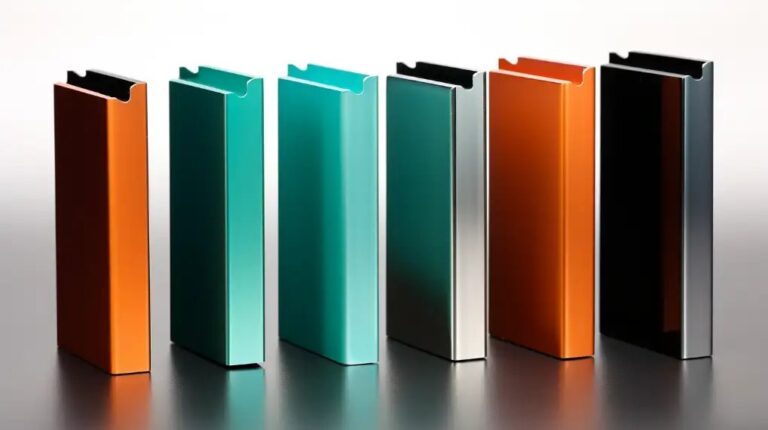
Properties of Anodized Steel
Durability and Strength
Anodized steel boasts exceptional durability. The oxide layer significantly enhances the metal’s resistance to wear and tear. This property makes it ideal for high-stress applications.
Corrosion Resistance
The anodized layer acts as a barrier against corrosive elements. It protects the underlying steel from oxidation and chemical attacks. This resistance extends the lifespan of steel products in harsh environments.
Aesthetic and Surface Finish
Anodization creates a smooth, uniform surface finish. It can maintain the steel’s natural appearance or add vibrant colors. The finish is long-lasting and resistant to fading or chipping.
Heat Resistance
Anodized steel exhibits improved heat resistance. The oxide layer acts as a thermal barrier, protecting the underlying metal. This property is valuable in high-temperature applications.
Environmental Impact and Sustainability
Anodizing is an environmentally friendly process. It doesn’t involve harmful chemicals or emissions. The durable finish reduces the need for replacements, contributing to sustainability.
Applications of Anodized Steel
Use in Construction and Architecture
Anodized steel is extensively used in building facades and structural elements. It offers durability and aesthetic appeal for both interior and exterior applications.
Applications in Automotive Industry
The automotive sector uses anodized steel for various components. These include trim pieces, engine parts, and decorative elements. The material’s corrosion resistance is precious in this field.
Role in Electronics and Technology
Anodized steel serves in electronic device casings and components. Its conductivity and heat resistance make it suitable for specific electronic applications.
Use in Consumer Products
Many consumer goods feature anodized steel. Kitchen appliances, tools, and sports equipment benefit from its durability and attractive finish.
Anodized Steel in Aerospace
The aerospace industry values anodized steel for its strength-to-weight ratio. It’s used in aircraft components and space exploration equipment.
Other Industrial Uses
Anodized steel plays roles in marine equipment, medical devices, and side channel blowers. Its versatility makes it valuable across various industrial sectors.
Benefits of Anodizing Steel
Enhanced Corrosion Resistance
Anodization significantly improves steel’s ability to withstand corrosive environments. This benefit extends the lifespan of steel products and reduces maintenance needs.
Improved Aesthetic Appeal
The anodizing process allows for a range of finishes. It can enhance the natural look of steel or add vibrant colors. The result is an attractive, long-lasting appearance.
Increased Surface Hardness
The oxide layer created by anodization is more complex than the base steel. This increased hardness improves wear resistance and durability.
Customization and Color Options
Anodizing steel offers extensive customization possibilities. Various colors and finishes can be achieved, allowing for unique design options.
Environmental and Economic Benefits
Anodizing is an eco-friendly process with long-term economic advantages. The durable finish reduces the need for replacements and harmful chemical treatments.
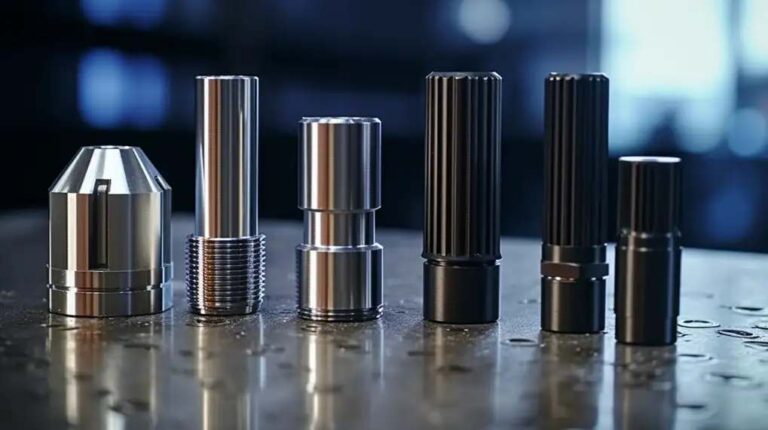
Challenges and Considerations in Anodizing Steel
Potential Issues During the Process
Anodizing steel can present several challenges. Uneven coating thickness may occur due to irregular current distribution. Proper control of bath chemistry and temperature is crucial to avoid defects.
Limitations of Anodized Steel
While anodized steel offers many benefits, it has limitations. Extreme pH levels can compromise the anodized layer. High-stress applications may cause the coating to crack or chip.
Cost Factors and Economic Considerations
Anodizing adds to the production cost of steel components. However, the long-term benefits often outweigh the initial expense. Factors like energy consumption and equipment maintenance contribute to the overall cost.
Maintenance and Care for Anodized Steel
Best Practices for Longevity
Regular cleaning prevents the buildup of dirt and contaminants. Avoid exposing anodized steel to extreme pH levels. Protect the surface from scratches and impacts to maintain the integrity of the anodized layer.
Cleaning and Maintenance Guidelines
Use mild soap and water for routine cleaning. Avoid abrasive materials or harsh chemicals. Rinse thoroughly and dry the surface to prevent water spots. For tougher stains, use specialized cleaners designed for anodized surfaces.
Repair and Re-Anodization
Minor scratches can often be buffed out. For more significant damage, re-anodization may be necessary. This process involves removing the old layer and applying a new one. It’s a complex procedure best done by professionals.
Comparison: Anodized Steel vs. Other Materials
Anodized Steel vs. Stainless Steel
Anodized steel offers better corrosion resistance than untreated steel. However, stainless steel naturally resists corrosion. Anodized steel provides more color options and can be more cost-effective in specific applications.
Anodized Steel vs. Galvanized Steel
Both processes protect steel from corrosion. Anodizing creates a more rigid surface than galvanizing. Galvanized steel offers sacrificial protection, while anodized steel provides a barrier. The choice depends on specific application requirements.
Anodized Steel vs. Painted Steel
Anodizing creates a more durable finish than painting. It’s less likely to chip or peel. Painted steel offers more color variety but may require more frequent maintenance. Anodized steel maintains its appearance longer in outdoor applications.
How to Choose the Right Type of Anodized Steel for Your Project
Factors to Consider
Select anodized steel based on your project’s specific needs. Consider the environment it will be exposed to, required durability, and aesthetic preferences. Evaluate the mechanical stress the material will undergo in its application.
Cost vs. Benefit Analysis
Weigh the initial cost against long-term benefits. Anodized steel may have a higher upfront cost but offers durability and low maintenance. Factor in potential savings from reduced replacement and upkeep expenses over time.
Supplier Selection and Quality Assurance
Choose reputable suppliers with proven track records. Request samples and certifications to ensure quality. Look for suppliers who offer technical support and can provide custom solutions if needed.
Conclusion
Anodized steel offers a powerful combination of durability, aesthetics, and versatility. Its corrosion resistance and customizable appearance make it suitable for diverse applications. While it has limitations, the benefits often outweigh the challenges for many projects.
Choosing anodized steel involves careful consideration of project requirements and long-term goals. With proper selection and maintenance, anodized steel provides a reliable, attractive, and cost-effective solution for various industrial and consumer applications.
Do you need a reliable sheet metal parts manufacturer? Shengen is the place to go. We specialize in sheet metal laser cutting, bending, surface finish, and CNC Machining. Reach out to Shengen Today and seek help from professionals!
FAQs
What is the Lifespan of Anodized Steel?
Properly maintained anodized steel can last several decades. The lifespan depends on environmental factors and usage conditions. It can maintain its properties in non-extreme environments for 20-30 years or more.
Is Anodized Steel Safe for Food Contact?
Yes, anodized steel is generally safe for food contact. The anodized layer is non-toxic and doesn’t react with food. However, always verify that the specific product meets food safety standards for your intended use.
How Does Anodized Steel Compare in Cost to Other Metals?
Anodized steel is often more cost-effective than stainless steel or specialty alloys. While it’s pricier than untreated steel, its longevity and low maintenance needs often result in lower long-term costs.
Can Anodized Steel Be Painted or Coated?
Yes, anodized steel can be painted or coated. However, this may negate some benefits of anodization. Special preparation is required to ensure proper adhesion. Consider whether a painting is necessary, given the aesthetic options available through anodization alone.
More Resources:
Comparison of Metal Finishes – Source: PBZ
Environmental Impact of Anodized – Source: Semanoinc
Anodize Cleaning & Maintenance – Source: Linetec
Hey, I'm Kevin Lee

For the past 10 years, I’ve been immersed in various forms of sheet metal fabrication, sharing cool insights here from my experiences across diverse workshops.
Get in touch

Kevin Lee
I have over ten years of professional experience in sheet metal fabrication, specializing in laser cutting, bending, welding, and surface treatment techniques. As the Technical Director at Shengen, I am committed to solving complex manufacturing challenges and driving innovation and quality in each project.

